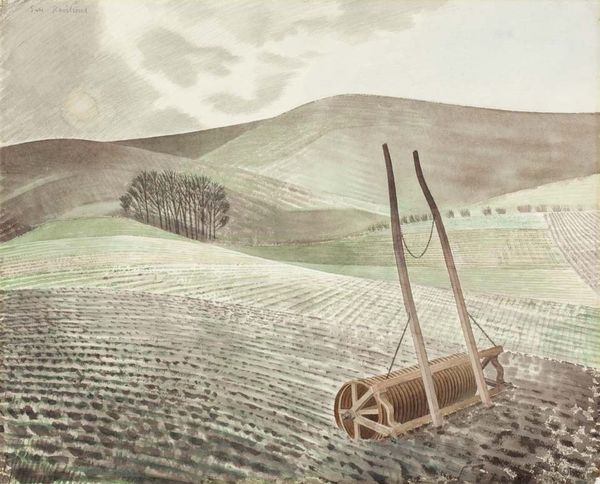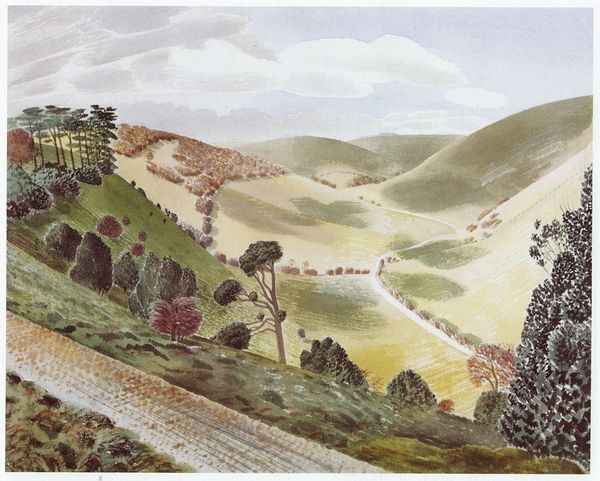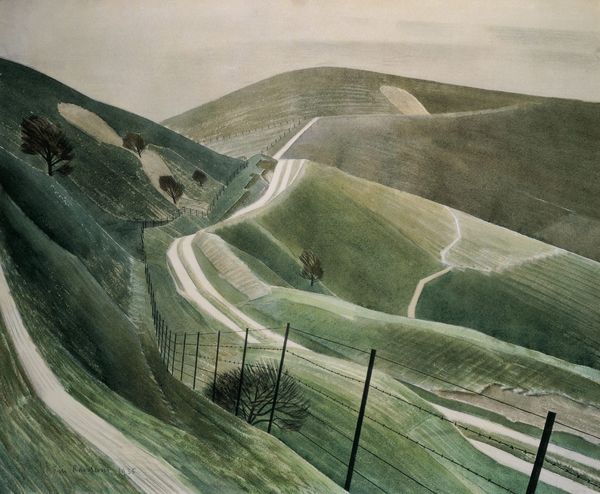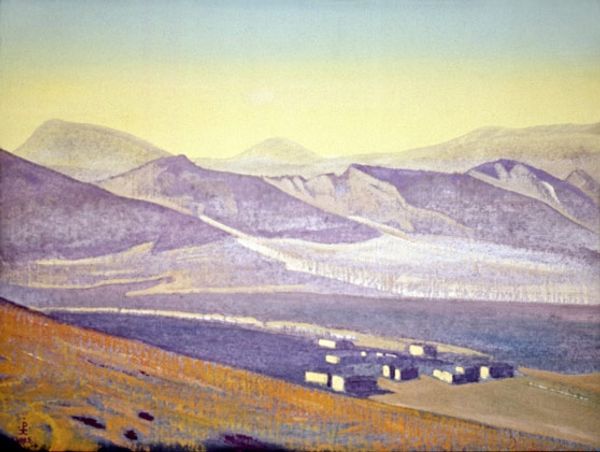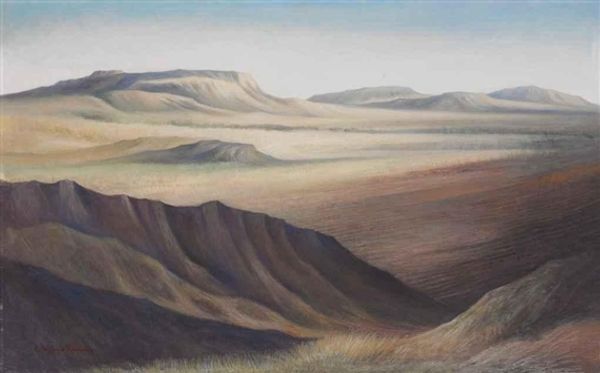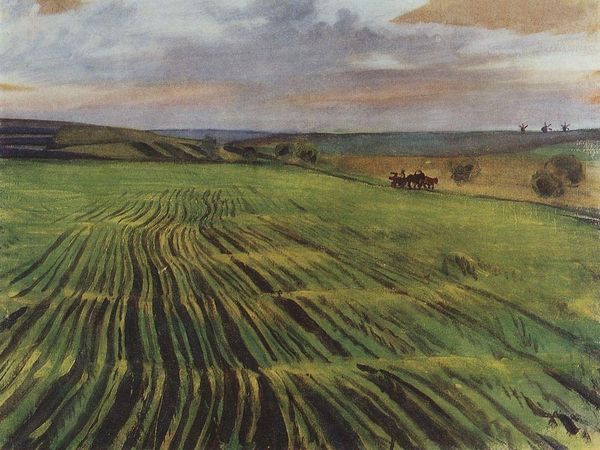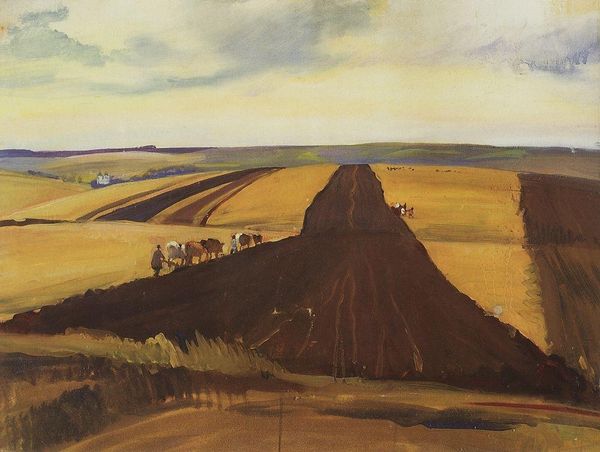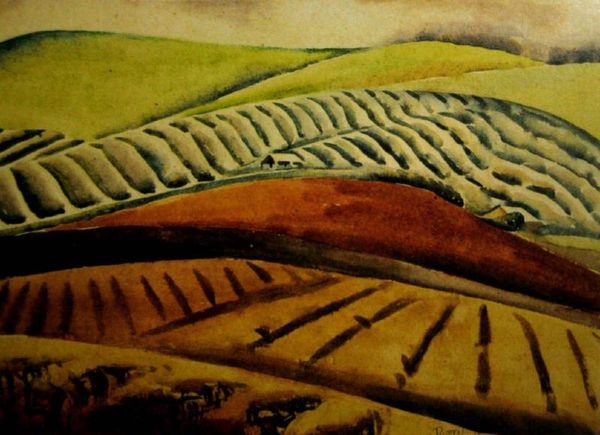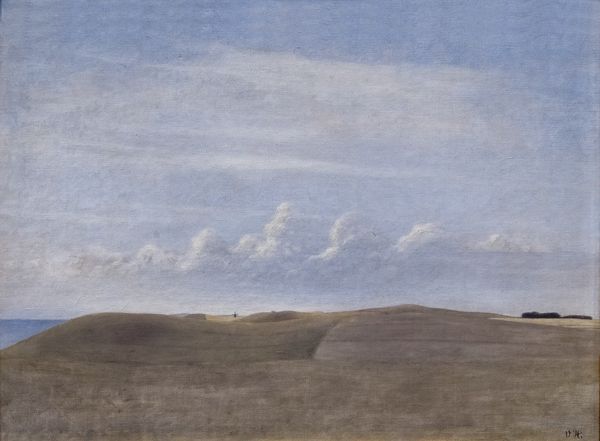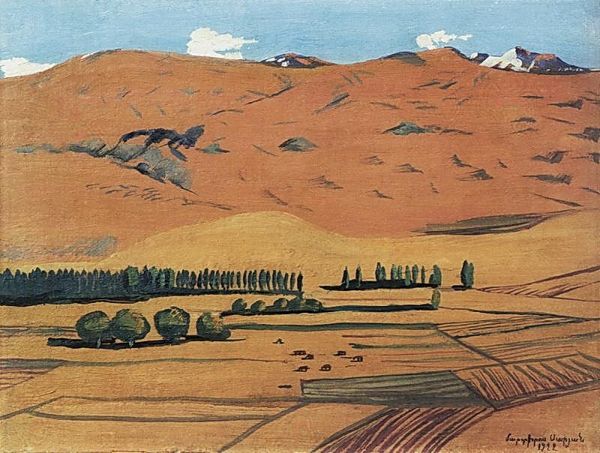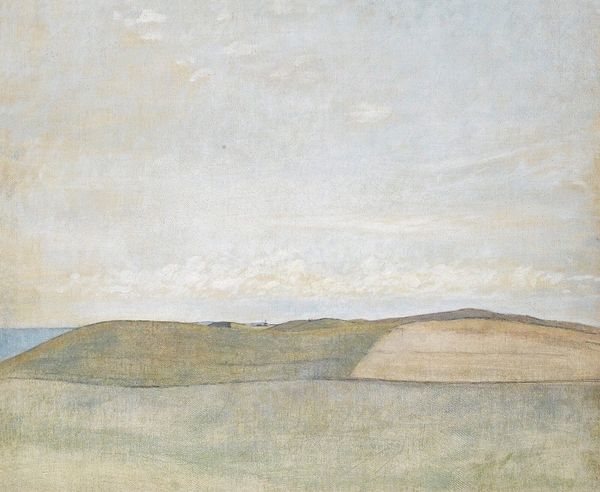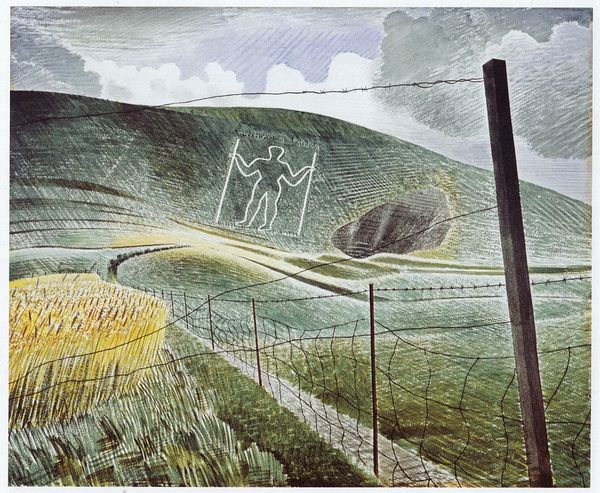
painting, watercolor
#
painting
#
landscape
#
form
#
watercolor
#
line
#
modernism
#
watercolor
#
realism
Copyright: Public domain
Curator: There’s something hauntingly serene about this scene. What's your initial read? Editor: It feels strangely static. A beautiful stillness, but also a sort of lonely monumentality, wouldn't you say? The landscape is both inviting and desolate. Curator: I agree. We're looking at "Windmill", a 1934 watercolor by Eric Ravilious. What strikes me is the interwar mood. There is a sense of embracing modernity but holding onto rural England with its industrial elements in harmony with nature. Editor: Absolutely. Ravilious captured this precise moment so poignantly. The windmill, of course, has a history steeped in resourcefulness and perseverance, but the symbol now hints at something fading, doesn't it? I almost want to assign a melancholy air of agrarian change to it. Curator: It does, especially when we consider Ravilious's position. Trained at the Royal College of Art, he became associated with the Neo-Realism movement, finding beauty and dignity in these ordinary rural subjects but not necessarily without looking towards their historical context. The formal structure of the work is remarkable. The watercolor rendering embraces flatness, while creating strong depth. Editor: Precisely. And even the very subtle tonality adds to the power, suggesting an enduring quiet in these times, where it hints at larger social, economical and psychological effects, even past the tangible subject matter. Windmills also hold a symbolic potency. To me they symbolize progress and then abandonment or uselessness. There's something of a psychological landscape within the physical one. Curator: Well, seeing this artwork reminds me that our understanding of history is always constructed, a dialogue between us and it. This quiet watercolor allows that exchange to be profoundly rich. Editor: And it also helps me to observe how something functional like a windmill is actually far more complicated when interpreted via symbol and image, across history and across cultures.
Comments
No comments
Be the first to comment and join the conversation on the ultimate creative platform.
